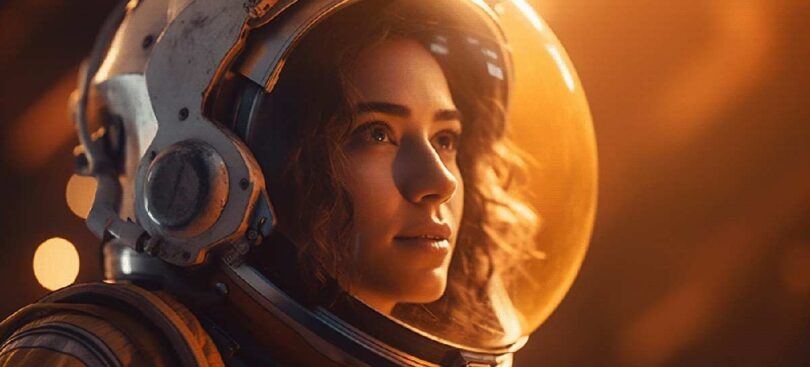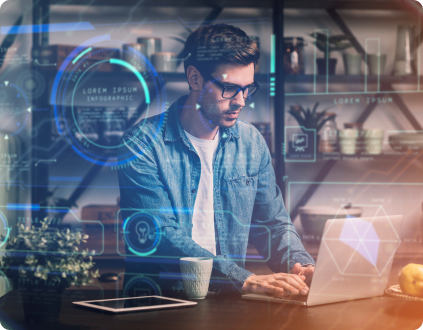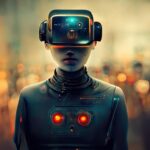
From Science Fiction to Reality: The Evolution of Artificial Intelligence
Artificial Intelligence (AI) was once just a fascinating idea in science fiction novels and movies. From humanoid robots in Isaac Asimov’s stories to intelligent computers in Star Trek, AI has long captured our imagination. However, what was once fiction is now a reality. AI is transforming industries, automating tasks, and even making decisions—just like the futuristic machines we once only dreamed of.
Let’s explore how AI evolved from science fiction to a real-world technology that is shaping our future. 🚀
🔮 The Origins of AI in Science Fiction
Long before AI became a real technology, authors and filmmakers imagined intelligent machines with human-like reasoning, emotions, and even consciousness.
✅ 1920s – The Concept of Robots
The word “robot” was first introduced in Karel Čapek’s play “R.U.R. (Rossum’s Universal Robots)”, where machines rebel against humans.
✅ 1950s – The Rise of AI in Literature
Isaac Asimov introduced the Three Laws of Robotics, predicting a world where AI-powered robots assist and interact with humans.
✅ 1968 – AI in Movies
The film “2001: A Space Odyssey” introduced HAL 9000, a self-aware AI with decision-making abilities—eerily similar to today’s AI chatbots and assistants.
✅ 1980s – AI Becomes More Human
Movies like “Blade Runner” and “The Terminator” showcased AI that could think, feel, and even challenge human dominance.
These fictional portrayals of AI laid the foundation for what scientists and engineers would eventually strive to create.
🤖 The Birth of Real-World AI (1950s – 1980s)
The dream of AI turned into a serious scientific pursuit in the mid-20th century when pioneers started exploring the possibility of creating intelligent machines.
✅ 1950 – The Turing Test
Alan Turing proposed a test to determine whether a machine could exhibit intelligent behavior indistinguishable from a human.
✅ 1956 – The Birth of AI as a Field
John McCarthy coined the term “Artificial Intelligence” at the Dartmouth Conference, marking the beginning of AI as a research field.
✅ 1960s – First AI Programs
Early AI systems, such as ELIZA, simulated human-like conversations, laying the groundwork for modern chatbots.
✅ 1980s – Expert Systems Emerge
AI-powered expert systems started assisting doctors, engineers, and businesses by mimicking human decision-making.
Though AI was in its infancy, it was already showing real-world applications beyond science fiction.
🚀 The AI Boom: From Research to Real-World Applications (1990s – 2010s)
With advancements in computing power and data availability, AI transitioned from research labs to real-world use cases.
✅ 1997 – AI Defeats a Human Chess Champion
IBM’s Deep Blue defeated world chess champion Garry Kasparov, proving that AI could outperform humans in strategic thinking.
✅ 2000s – AI Goes Mainstream
Voice assistants like Apple’s Siri (2011) and Google Assistant (2016) brought AI into our daily lives.
✅ 2011 – AI Wins on Jeopardy!
IBM’s Watson defeated human champions on the quiz show Jeopardy!, showcasing AI’s ability to process and analyze natural language.
✅ 2015 – AI in Self-Driving Cars
AI-powered autonomous vehicles from companies like Tesla and Waymo began to take shape.
This period marked a turning point where AI left the realm of fiction and became part of our everyday reality.
🌍 AI in the Modern World (2020s – Present)
Today, AI is no longer just a supporting tool—it’s a driving force behind business, healthcare, entertainment, and scientific discovery.
🔹 AI in Healthcare
- AI detects diseases like cancer with greater accuracy than human doctors.
- AI-powered chatbots provide remote medical consultations.
🔹 AI in Business & Marketing
- AI analyzes consumer behavior, predicting trends before they happen.
- AI chatbots provide 24/7 customer support, improving business efficiency.
🔹 AI in Space Exploration
- AI assists NASA in analyzing planetary data and controlling rovers on Mars.
- AI-driven telescopes discover new exoplanets beyond our solar system.
🔹 AI in Entertainment
- AI-generated art, music, and deepfake videos are revolutionizing creative industries.
- Streaming platforms use AI to recommend movies and music based on user preferences.
From automating simple tasks to making critical decisions, AI is no longer just a futuristic idea—it is an essential part of our world.

- 🔮 The Future of AI: What’s Next?
- AI is evolving at an unprecedented pace, and the future holds even more exciting possibilities:
- ✅ General AI (AGI) – AI that can think, learn, and make decisions like a human.
- ✅ AI in Quantum Computing – AI-powered quantum systems will solve complex problems in seconds.
- ✅ AI-Powered Smart Cities – AI will optimize traffic, energy usage, and security in urban areas.
- ✅ Human-AI Collaboration – AI will augment human intelligence, rather than replace it.
- The boundary between science fiction and reality continues to blur, and we are witnessing AI transform from a dream into one of humanity’s most powerful tools.
💡 Final Thoughts
What started as imaginative storytelling has become one of the most significant technological revolutions in human history. AI is no longer just a character in science fiction—it’s a real-world innovation shaping our present and future.
🌟 The question is no longer “Can AI exist?” but rather “How will we shape AI’s impact on our world?” 🚀








1 Comment
Hi, this is a comment.
To get started with moderating, editing, and deleting comments, please visit the Comments screen in the dashboard.
Commenter avatars come from Gravatar.